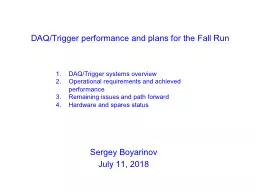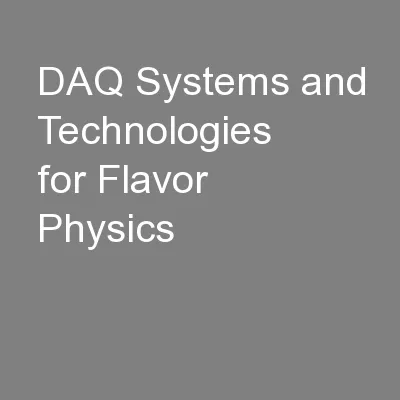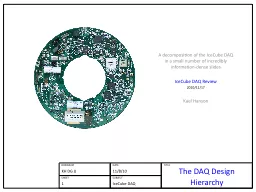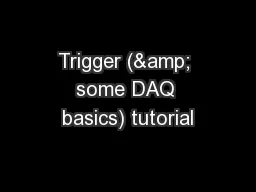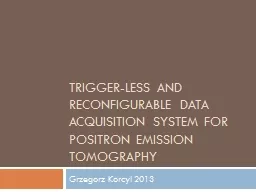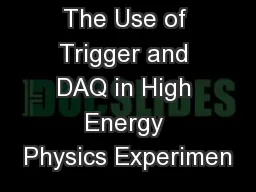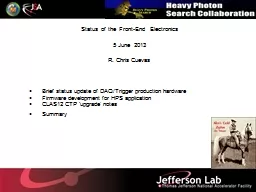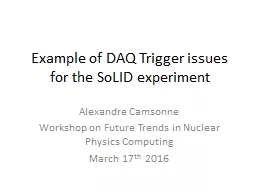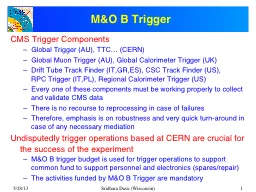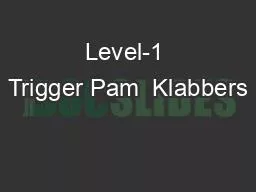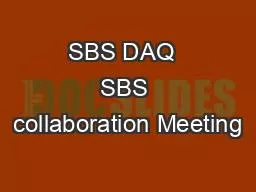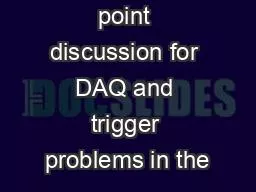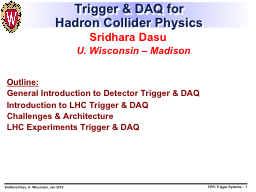PPT-DAQ/ Trigger performance and plans for the Fall Run
Author : laxreffa | Published Date : 2020-06-26
Sergey Boyarinov July 11 2018 DAQ Trigger systems overview Operational requirements and achieved performance Remaining issues and path forward Hardware and spares
Presentation Embed Code
Download Presentation
Download Presentation The PPT/PDF document "DAQ/ Trigger performance and plans for..." is the property of its rightful owner. Permission is granted to download and print the materials on this website for personal, non-commercial use only, and to display it on your personal computer provided you do not modify the materials and that you retain all copyright notices contained in the materials. By downloading content from our website, you accept the terms of this agreement.
DAQ/ Trigger performance and plans for the Fall Run: Transcript
Download Rules Of Document
"DAQ/ Trigger performance and plans for the Fall Run"The content belongs to its owner. You may download and print it for personal use, without modification, and keep all copyright notices. By downloading, you agree to these terms.
Related Documents

